Lens Shootout - 200mm
After having owned and used three popular lenses that go to 200mm I thought I noticed that perhaps one of them was a little longer at 200mm than the others. I wasn't sure, maybe it was a placebo-effect of using a big heavy lens: it just somehow felt "longer." I needed to do a comparison to be sure.
The Setup
First, I setup a tripod in my back yard so that I could maintain the same setup for each shot.
I set the camera to f/8, set the ISO to 100, and used Aperture priority. All shots were done on a Nikon D80. AF was set to center and I aimed at the for sale sign.
Here is a list of the lenses used in this shootout. The links take you to each lenses' individual review so that you can read more about them.
The Comparisons
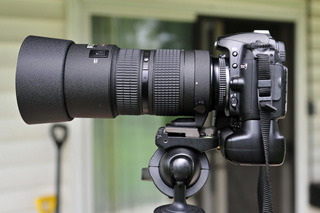
Up first, let me note that the 80-200mm lens has a tripod collar. For the interest of comparing like-to-like I purposely mounted the lens to the camera and the camera to the tripod. This maintains the camera's sensor in the same relative position. But, I also then properly mounted the lens itself to the tripod (see photo on right). I thought I would first show you how this same lens behaves differently when mounted each way.
I would also like to point out that when the lens itself is mounted to the tripod the whole setup is a lot more stable. When the lens was on the camera and the camera mounted to the tripod, the end had a tendency to dip, so I actually had to adjust things "up" higher, leading to an ever-so-slight difference in view angle. This doesn't impact the zoom comparison.
Roll your mouse over to see the difference:
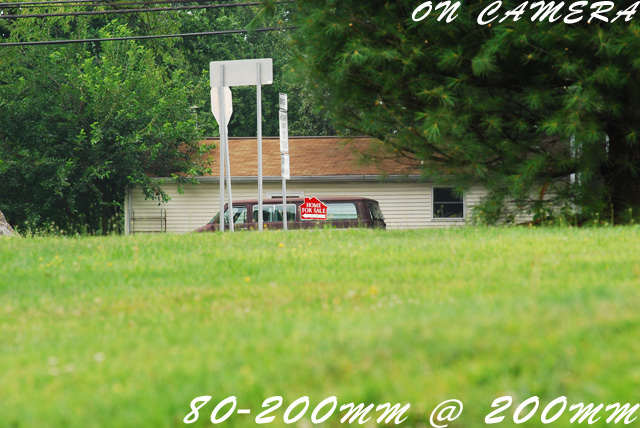
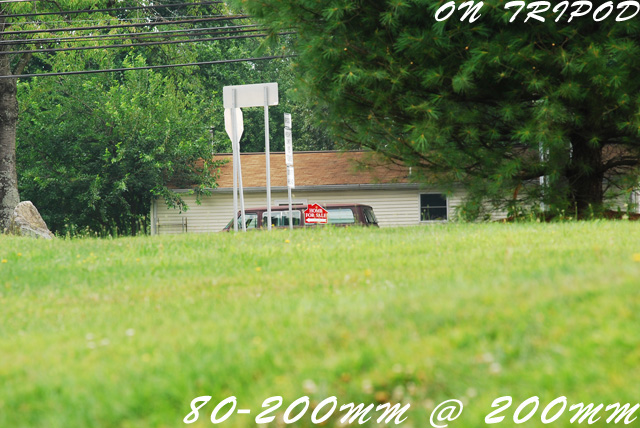
Result: This is obvious and completely expected, moving the camera backwards and using the tripod collar means that our effective zoom is "shorter." Really, this is just the same as if I had moved the tripod backwards a little, or if you were hand holding the lens you took a step backwards.
Just to clarify, all future comparisons on this page of the 80-200mm lens will be done using the camera-mounted version since the other lenses all lack a tripod collar.
For the first lens-versus-lens comparison, I will start with the reason I wanted to do this comparison in the first place: the Nikon 80-200 versus the Nikon 18-200 VR.
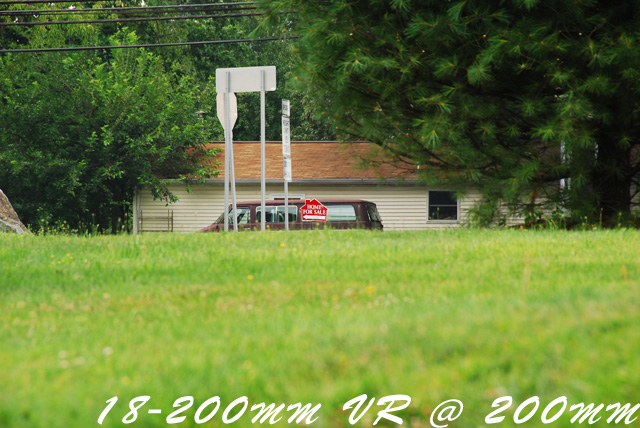
Result: The 80-200mm lens is longer than the 18-200mm lens. Both are relatively just as contrasty.
Now, let's compare the two consumer-level lenses (the 18-200mm VR and the 55-200) directly.

Result: Here again the 18-200mm is shorter. The much cheaper 55-200mm lens is actually longer at 200mm. But, the 55-200mm is not as nice and contrasty as the 18-200mm lens.
And now, just to round out the competition, the only comparison left, the cheapest lens versus the most expensive lens: the Nikon 55-200mm versus the 80-200mm.
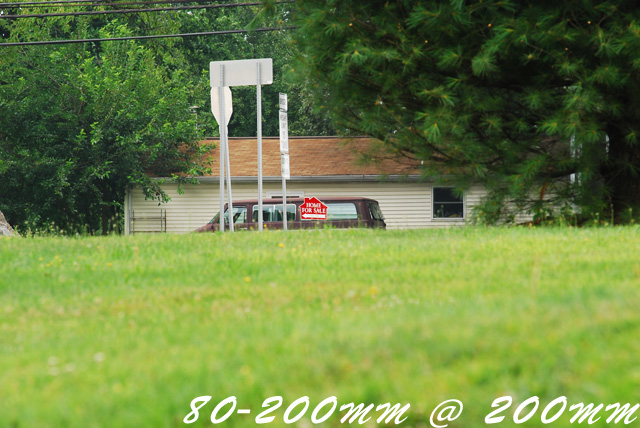
Result: These two lenses are nearly identical at their 200mm length, but the 80-200mm lens is a little sharper and the image quality is better due to being slightly more contrasty.
The Conclusion
Well, there you have it. Three lenses ranging from cheap consumer, to middle-grade "pro-sumer," to high-end professional. As expected the high-end professional is the clear overall winner being tied for the longest at 200mm and still having great contrast and image quality.I put second place as a tie between the 18-200mm VR and the 55-200mm. The 55-200mm is longer at 200mm and a lot cheaper, while the 18-200mm VR is annoyingly shorter its image quality is better. You can read about all of my gripes about each lens in their own individual review pages.